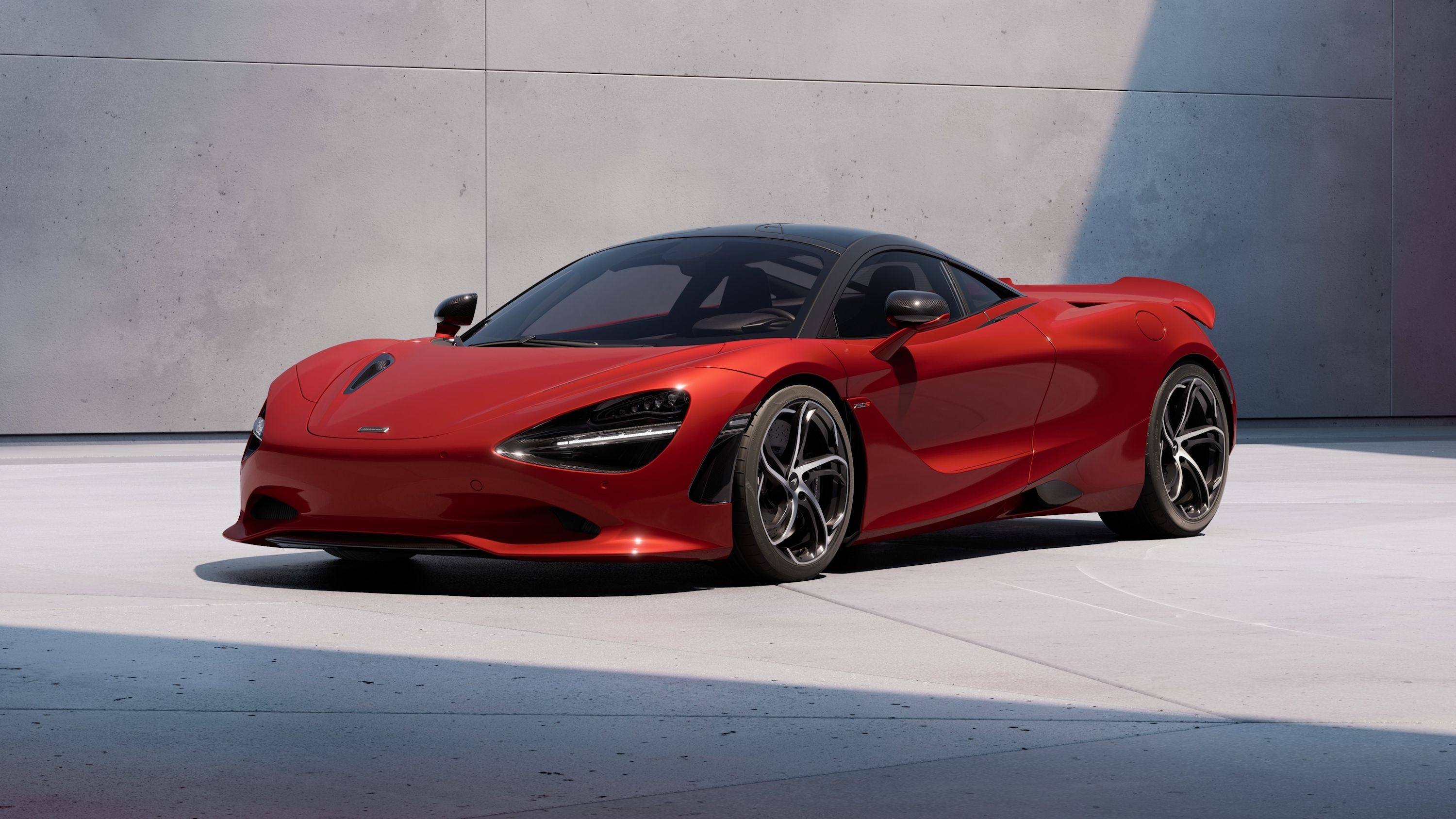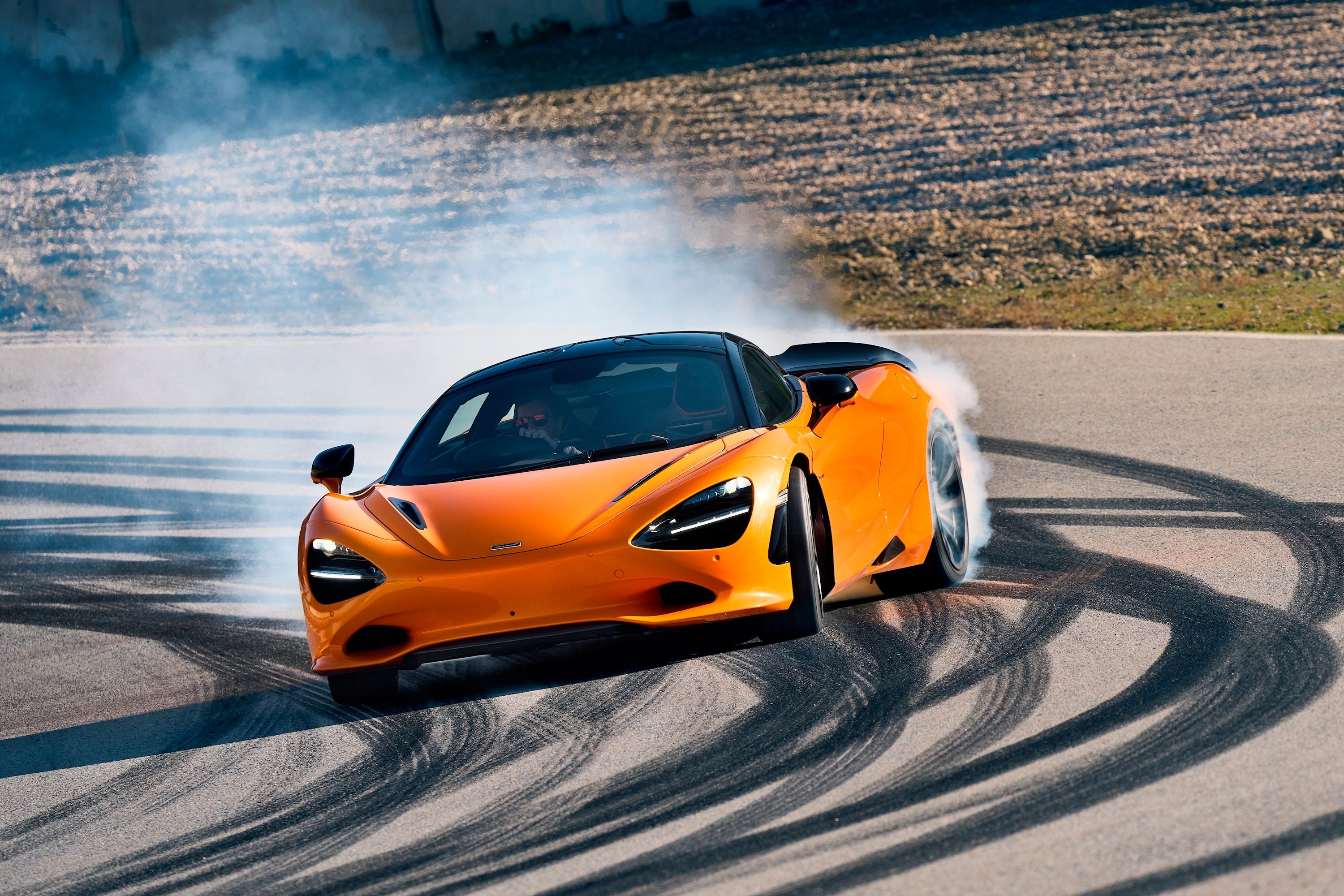
After six years of the McLaren 720S redefining how much speed is actually necessary for a roadgoing car, McLaren has facelifted its primary Super Series model resulting in the McLaren 750S. Instead of getting an all-new look, though, it appears on the surface to be a relatively subtle update. However, there's much more to it than a modified name and a couple of restyled bumpers - more than 30% of the car is new or upgraded. We've covered the car in greater detail here, but if you need a crash course on what's new for the McLaren supercar, we've got you covered with the five most important changes you need to be aware of.
1. Lightest Series Production McLaren Ever
The 720S was no heifer, but McLaren decided there was weight to be saved. In standard form, the 750S weighs 66 pounds less than the 720S, tipping the scales at 3,062 lbs in Coupe form, with the Spider weighing only 108 lbs more at 3,170 lbs. You can add a ton of lightweight options, though, reducing its weight substantially. Without a driver and fluids (dry weight), the lightest configuration is a scant 2,815 lbs.
Core to this weight saving are a pair of carbon fiber-shelled seats (38.6 lbs lighter) and standard ultra-lightweight 10-spoke forged wheels (30.4 lbs lighter). But while those are the substantial items, there's innovation throughout. The windshield glass is 3.5 lbs lighter, for example, and the new driver instrument display is 4 lbs lighter. The new spring and damper suspension design reduced weight by 4.4 lbs, the exhaust design is another 4.8 lbs less, and the larger rear wing is 3.5 lbs less than the old item.
2. More Power + Shorter Final Drive
McLaren will go hybrid for all-new models, but this isn't an entirely new car, so it retains the twin-turbo 4.0-liter M840T V8 from the 720S. In this iteration, it produces 740 horsepower and 590 lb-ft of torque, which is surprisingly down on power compared to the 765LT. The intention is not outright power here, and the engine has been enhanced with greater boost pressure and new lightweight pistons, with a secondary high-flow fuel pump supporting the engine's needs. A new exhaust is also louder and more emotive than before.
Coupled with a shorter final drive, acceleration figures have been improved a smidge. On the coupe, 0-60 mph takes 2.7 seconds, 0-124 takes 7.2, and you'll hit 186 mph in under 20 seconds before topping out at 206 mph. Fancy hitting the drag strip? The ¼-mile takes a claimed 10.1 seconds.
3. Retains Hydraulic Steering
In a world where even Ferrari uses electronic power-assisted steering (EPAS), McLaren must be mad for retaining hydraulic steering. Or is it? McLaren claims that its buyers want engagement, and the steering feel provided by hydraulic systems is in the brand's DNA.
"From our side, we have a system that delivers the known McLaren DNA," representatives told us at a pre-launch briefing. "At the moment, we're sticking with what we have because it is delivering class-leading performance." That performance has been amplified by a new power steering pump that adds refinement without detracting from "the standards of feel and feedback that we have learned to expect from a McLaren."
A new front suspension geometry, coupled with 3% softer suspension in front and 4% stiffer at the rear, plus a quicker steering rack, contribute to what McLaren believes will remain a benchmark and something McLaren clientele won't compromise on.
4. New Driver-Focused Controls & Displays
The lightweight driver insurrection we mentioned sees the 750S forego the folding driver display of the 720S in favor of a fixed-size screen mounted to the steering column. While the steering wheel is devoid of any clutter and additional buttons, the instrument cluster is flanked by two rocker switches that let drivers switch between drive modes and suspension and powertrain settings with their fingertips without ever letting go of the wheel.
A new feature for the 750S is the McLaren Control Launcher, which enables a custom drive mode to be set and stored, ready to be recalled at the touch of a single button. This mode lets the driver customize the powertrain, transmission, suspension, exhaust, and even the aero to their liking.
5. Evolutionary Longtail Styling
While much of the 750S looks familiar, there are changes. The front bumper is now a one-piece item with a more pronounced carbon fiber front splitter, and the air intakes in the headlight clusters have been redesigned. The carbon surrounds of the headlights can also be specced in body color.
The side profile features revised air intakes to channel air to the high-flow radiators, but it's out back where the changes are most noticeable. This isn't a true Longtail derivative, but you'd be easily forgiven for assuming it is. A new carbon fiber active rear spoiler is 20% larger but several pounds lighter. This wing now sits higher than before and provides airflow above and under it. In addition to its air braking functionality, it also has a low-drag DRS mode. Beneath this, twin exhausts are centrally mounted with a new heat extraction mesh and a revised rear bumper with new air extraction vents.
It may not look that new from afar, but this is a much-refined supercar that will offer a better driving experience than a 720S (we hope).

